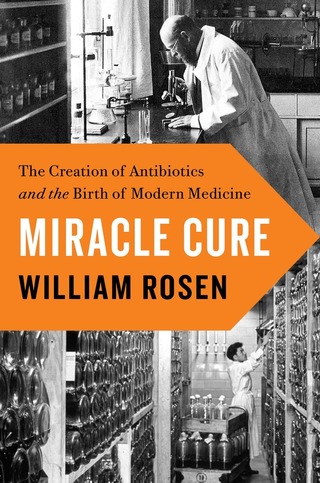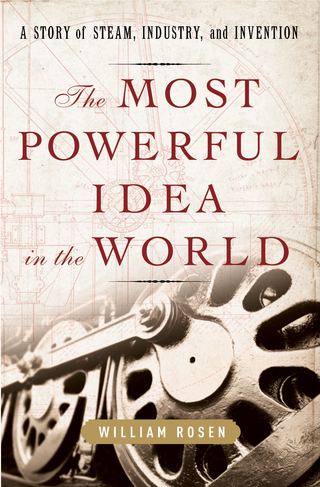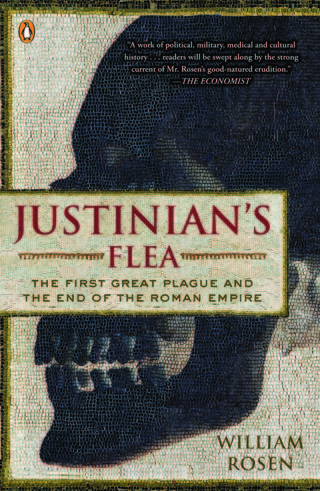Works

"A richly documented history of the rise—and threatened future—of antibiotics… An encyclopedic reference for researchers and practitioners but also accessible for general readers due to Rosen's lively depiction of the people, places, and politics that color the history of the fight against infectious disease."'
—Kirkus Reviews, (starred review)
"Former publisher and editor Rosen tackles a dazzling chapter of modern medical history in this chronicle of the discoveries that opened the age of antibiotics and gave humankind its first effective tool to fight back in an 'eons-long war' with infectious disease… Rosen's thoughtful, scholarly, and engaging history is a powerful testament to this fight."
—Publishers Weekly, (starred review)
MIRACLE CURE: The Creation of Antibiotics and the Birth of Modern Medicine
The epic history of how antibiotics were born, saving millions of lives and creating a vast new industry known as Big Pharma.
As late as the 1930s, virtually no drug intended for sickness did any good; doctors could set bones, deliver babies, and offer palliative care. That all changed in less than a generation with the discovery and development of a new category of medicine known as antibiotics. By 1955, the age-old evolutionary relationship between humans and microbes had been transformed, trivializing once-deadly infections.
William Rosen captures this revolution with all its false starts, lucky surprises, and eccentric characters. He explains why, given the complex nature of bacteria—and their ability to rapidly evolve into new forms—the only way to locate and test potential antibiotic strains is by large-scale, systematic, trial-and-error experimentation. Organizing that research needs large, well-funded organizations and businesses, and so our entire scientific-industrial complex, built around the pharmaceutical company, was born.
Timely, engrossing, and eye-opening, Miracle Cure is a must-read science narrative—a drama of enormous range, combining science, technology, politics, and economics to illuminate the reasons behind one of the most dramatic changes in humanity’s relationship with nature since the invention of agriculture ten thousand years ago.
-x_small.jpg)
THE THIRD HORSEMAN: Climate Change and the Great Famine of the 14th Century
In May of 1315, it started to rain. It didn’t stop anywhere in northern Europe until August. Next came the coldest winters in a millennium. Two separate animal epidemics killed nearly 80 percent of northern Europe’s livestock. Wars between Scotland and England, France and Flanders, and two rival claimants to the Holy Roman Empire destroyed the remaining farmland. After seven years, the combination of lost harvests, warfare, and pestilence would claim six million lives—one eighth of Europe’s total population.
The Third Horseman tells the story of those seven years -- one of the most astonishing catastrophes in Europe’s history. But more than that, it reveals the complex and interrelated forces, centuries gestating, that set the stage for the apocalyptic disaster that became known as the Great Famine. The Third Horseman draws connections between feudalism and agricultural economics; climatology and Viking exploration; chivalric warfare and village life, showing how a succession of impersonal traumas conspired to turn hunger into starvation. And not merely impersonal. The Third Horseman paints rich portraits of the key actors of the period, characters such as Scotland’s William Wallace and Robert Bruce, facing off against a feckless Edward II of England whose failures serve as a colorful backdrop to changing demographics across Europe. And, incorporating the most current scientific theories and economic models The Third Horseman demonstrates the powerful implications for climate change today..
A stunning story told with exceptional wit and drama by a writer whose breadth of knowledge of history and science defies category, The Third Horseman is a reminder that history can be made by events that shift, ever so gradually, the delicate balance between life and death.

THE MOST POWERFUL IDEA IN THE WORLD: A Story of Steam, Industry, and Invention
In less than a century, in a single place, human welfare and prosperity, which had barely changed in the preceding 10,000 years, entered an era of sustained and explosive growth that continues to this day. The moment did not occur in 2nd century Alexandria, or 12th century China, or Renaissance Italy, but in 18th century Britain; and, as detailed in this extraordinary narrative, the reason was the power of an idea: that inventors should have ownership of their inventions.
The Most Powerful Idea in the World is the story of that idea as expressed in the “biography” of a single invention: the steam engine. How it came to be born; how it grew to power factories, drive other inventions, and carry people and freight, by rail and by sea. Along the way, it introduces a giant cast of larger-than-life characters, including:
The brilliant Oxford polymath Robert Boyle, whose experiments with vacuum were as critical to the first steam engines as his founding of the world’s first scientific society;
The medieval monastic order that almost revolutionized the manufacture of iron…and the Shropshire metalworkers who did;
The London toolmaker Henry Maudslay, who first demonstrated how to incorporate precision into mass production;
Scotland’s artisan-scientist James Watt, who gave Britain the first steam engines that could not just drive pumps, but turn wheels…and became his nation’s hero;
John Fitch and Oliver Evans, who inspired America’s founders to make the promotion of invention a part of the new nation’s constitution.
The Most Powerful Idea in the World shows how the fuse for the invention explosion of the 18th century was ignited in the 17th: by the scientist and diplomat Francis Bacon, who first defended a national responsibility for investment in research; by the jurist Edward Coke, who wrote the world’s first patent law; and by the philosopher John Locke, who championed the right to own one’s ideas.
The Most Powerful Idea in the World is not simply a description of how coal burns, gears engage, and steam condenses; not merely a primer on metallurgy, textile manufacturing, mechanical engineering, legal theory, and economic history. It is a dazzling and thought-provoking narrative of the moment when a generation of English artisans became the most inventive population in human history.

JUSTINIAN'S FLEA: The First Great Plague and The End of the Roman Empire
In the middle of the 6th century, the world’s smallest organism collided with the world’s mightiest empire. Twenty-five million corpses later, the Roman Empire, under her last great emperor, Justinian, was decimated. Before Yersinia pestis, the bacterium that carries bubonic plague, was through, both Rome and Persia were easy pickings for the armies of Muhammad on their conquering march out of Arabia. In its wake, the plague – history’s first pandemic – marked the end of a multinational imperium and the birth of European nation-states…the transition from antiquity to the medieval world.
Justinian’s Flea is the story of that collision, a narrative history that weaves together evolutionary microbiology, architecture, military history, geography, rat and flea ecology, jurisprudence, theology, epidemiology, and the economics of the silk trade. The climax of Justinian’s Flea – the summer of 542, when Constantinople witnessed the death of 5,000 of its citizens every day – is revealed through the experiences of the remarkable individuals whose lives are a window onto a remarkable age: Justinian himself, of course, but also his doppelganger, the Persian Shah Khusro Anushirvan, whose empire would be so weakened by plague that it essentially vanished; his general Belisarius, the greatest soldier between Caesar and Saladin, whose conquests marked the end of imperial rule in Italy and Africa; his architect, Anthemius, the mathematician-engineer who built Constantinople’s Hagia Sophia (and whose brother, Alexander, was the great physician of the plague years); Tribonian, the jurist who created the Justinianic Code, the source of Europe’s tradition of Civil Law; and, finally, his empress Theodora, the one-time prostitute who became co-ruler of the empire, the most politically powerful woman in European history until Elizabeth I.
Melding contemporaneous accounts with modern disciplines as disparate as climatology and economics – the pandemic was equally dependent upon a year-long temperature change that permitted the arrival of Y. pestis at the mouth of the Nile, and upon the huge maritime trade in grain that originated there – Justinian’s Flea is a unique account of one of history’s great hinge moments.